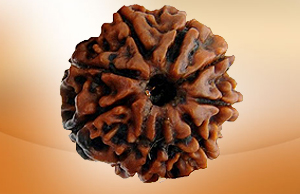 Rudraksh is a fruit born on the trees found in Nepal, Bhutan and Kedarnath. This fruit has an intrinsic hole through which they are threaded like beads. It is believed that these fruits are the favourite of Lord Shiva and hence his devotees – Shiv Bhaktas – wear garlands of these fruits.
Rudraksh is a fruit born on the trees found in Nepal, Bhutan and Kedarnath. This fruit has an intrinsic hole through which they are threaded like beads. It is believed that these fruits are the favourite of Lord Shiva and hence his devotees – Shiv Bhaktas – wear garlands of these fruits.
Rudrakshas are of four colours – white, red, yellow and black and are worn respectively by Brahmins, Kshatriyas, Vaishyas and Shudras. These fruits are of various sizes from that of amla to chickpea and impart benefits accordingly. Amla sized Rudraksh gets rid of problems, berry sized brings good luck, gunj sized fulfils wishes etc. Small Rudrakshas are considered to be the most beneficiary. Rudraksh fruits have very rough exterior and bear lines, which are called mukh (mouth) – there can be 1 to 14 mukhas on a Rudraksh.
Ekmukhi (with one mouth) is considered the superior most like Shivrup, Moksh & Mokshdata and Lakshmidayak. Two-mouthed fulfils wishes, three-mouthed imparts knowledge, four-mouthed imparts four purusharthas. One who wears Rudrakshas has no fear from exorcist or bad omen etc.
According to the mythology behind its advent, when Lord Shiva closed eyes with ease after one thousand years of divine penance, two drops of tears rolled out of his eyes and became trees bearing Rudrakshas. First they grew in the land of Gaud and thereafter spread elsewhere.
Rudraksh is also considered very important in Ayurveda. It provides relief from acidity, cold-cough and semen problems. Patients with high blood pressure benefit from drinking water in which Rudraksh is emersed overnight in a copper vessel. According to Yogis, Rudraksh bears prantatva – energy controlling electricity. One is supposed to wear garland of either 108 or 27 Rudrakshas.
Rudrakshas are also found in Trimbakeshwar near Nashik.
Courtesy : Mr. Pachorkar